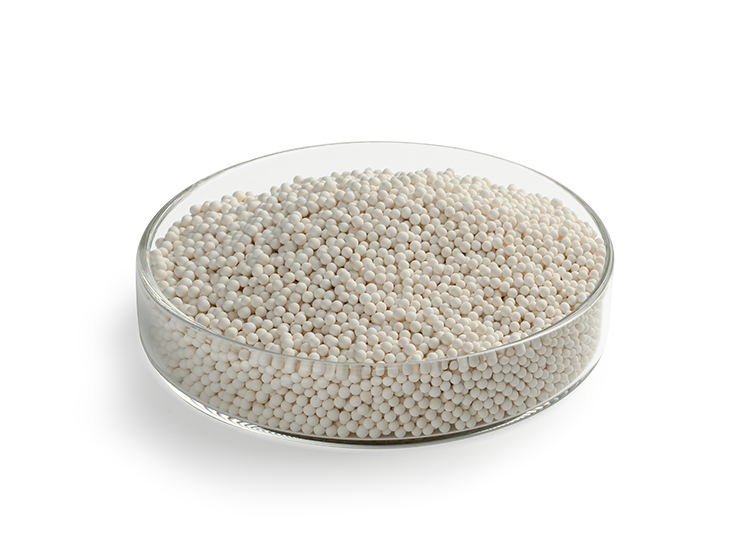Catalyst

Name:Epichlorohydrin Catalyst/POCL
The epichlorohydrin catalyst (known as “POCL”) is used in the synthesis of epichlorohydrin via the allyl chloride/hydrogen peroxide process. Under the action of this catalyst, the synthesis of epichlorohydrin by means of the allyl chloride/hydrogen peroxide process can proceed under mild conditions, and the catalyst has a long useful life. While maintaining a conversion rate of hydrogen peroxide in excess of 98%, the catalyst has a useful life of more than 3,000h. This process has only water as a byproduct, and meets the requirements of green chemistry.
The global industrial production of epichlorohydrin currently chiefly employs the high temperature chlorination of propylene, the glycerol method, or the allyl acetate method. However, due to many byproducts, severe environmental pollution, and poor atom economy arising from these methods, they urgently await replacement by green processes. Since the use of a titanium-silicon zeolite to catalyze the epoxidation of allyl chloride in the direct preparation of epichlorohydrin is non-polluting, highly selective, and involves mild reaction conditions, it is one of the most effective means of resolving the foregoing problems. The chief goals of the direct epoxidation of allyl chloride include minimizing energy consumption and avoiding the problem of equipment corrosion. Apart from requiring only mild reaction conditions, the process, direct epoxidation reaction to produce epichlorohydrin, is short and produces small amounts of the “three wastes” (waste gas, waste water, and waste residues), while also resulting in high epichlorohydrin yield. It is very much in keeping with the “green chemistry concept” and meets the requirements of “atom economy”.
Get Product Catalog, Service Introduction and Quotation
